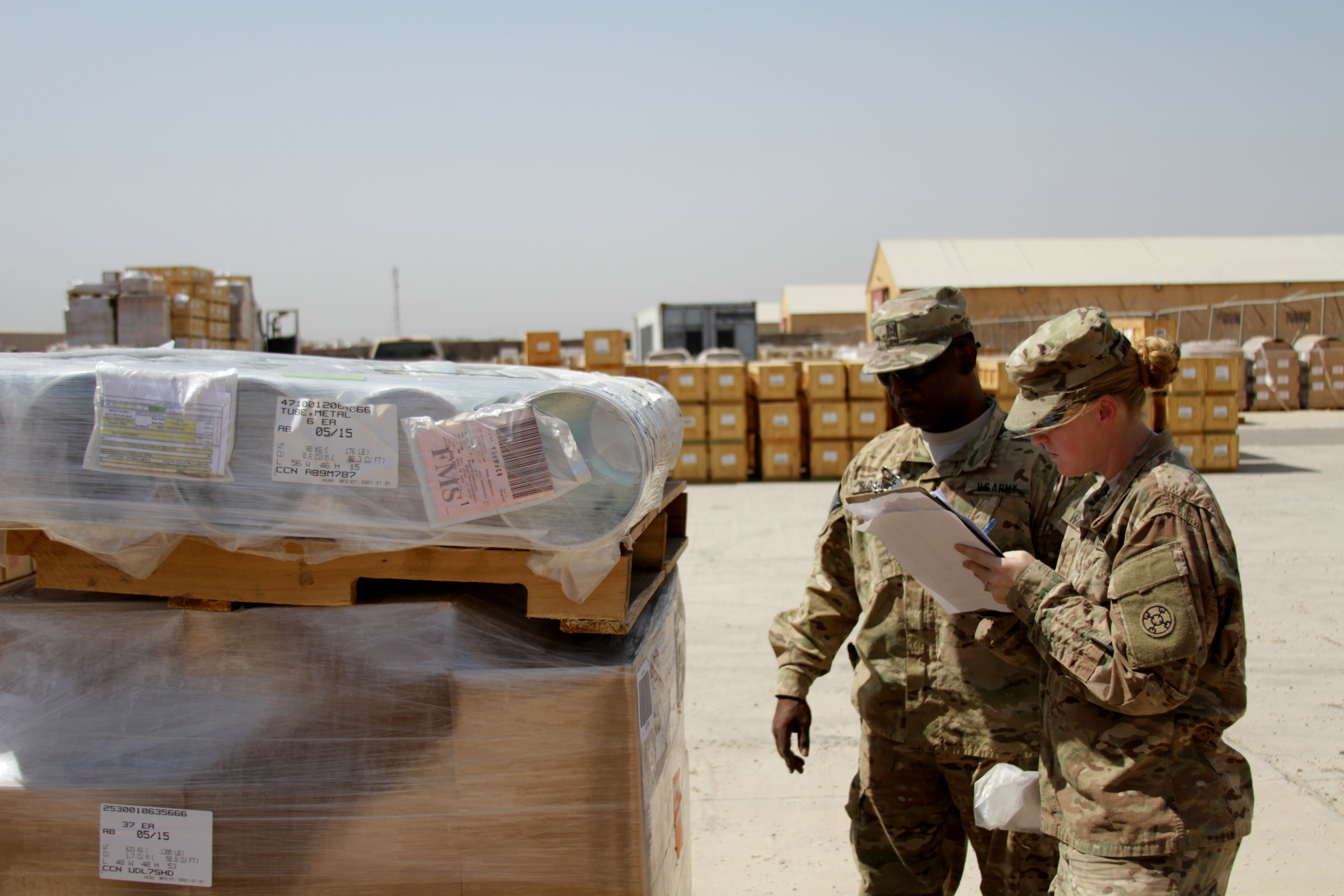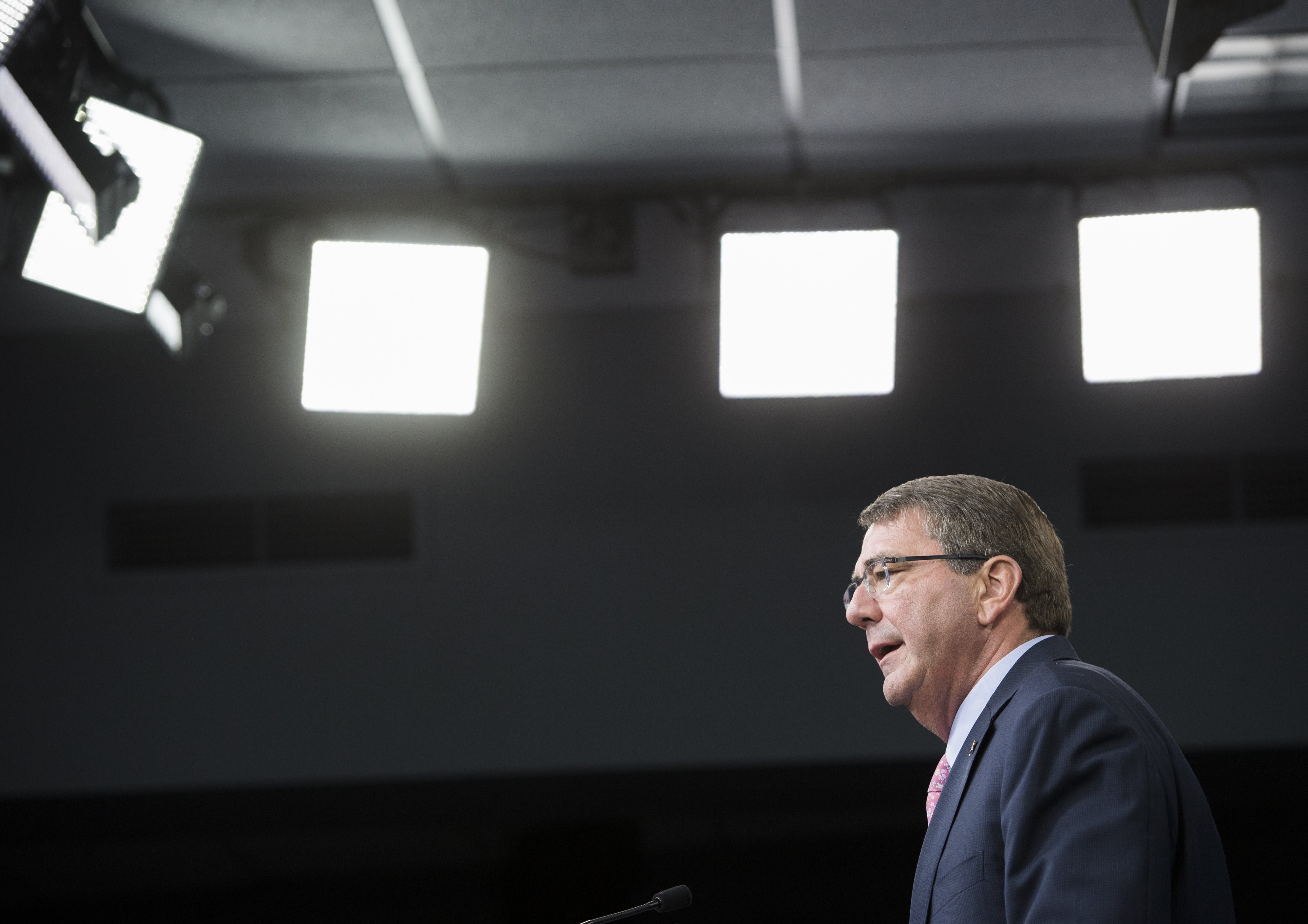WASHINGTON — No one disputes that U.S. military forces are fighting in combat in Iraq and Syria — except maybe President Obama and some members of his administration.
The semantic arguments over whether there are American "boots on the ground" muddy the view of a situation in which several thousand armed U.S. military personnel are in Iraq and Syria. Obama has said more than a dozen times that there would be no combat troops in Iraq and Syria as the number of service members in those countries grows; last week, Defense Secretary Ash Carter acknowledged the military personnel there were in combat and "we should say that clearly."
So, when is a military boot on the ground? And what does it all mean?
Are U.S. troops in Iraq?
Yes, more than 5,500 U.S. service members. The Pentagon, however, counts them in different ways. Obama recently authorized an increase in the number of troops that can deploy to Iraq to advise and assist Iraqi forces in fighting the Islamic State group. The cap was increased last week from 3,870 to 4,087.
But a number of troops aren't counted against the cap because of the military's personnel accounting system. For example, troops assigned to the U.S. Embassy for security or those sent to Iraq for temporary, short-term assignments are there in addition to the 4,087.
Defense Secretary Ash Carter, in Stuttgart, Germany, for a change-of-command ceremony Tuesday, revealed that a serviceman had been killed in combat near Irbil in Iraq. A U.S. military official, speaking on grounds of anonymity, said the American was killed while performing his duty as an adviser to Kurdish peshmerga troops. He was killed by "direct fire" after ISIS forces penetrated the peshmerga's forward line. The official said the American was 2 to 3 miles behind the front line.

An airstrike by a U.S.-led coaltion warplane explodes on an ISIS position on Nov. 10, 2015, near the town of Hole, Rojava, Syria.
Photo Credit: John Moore/Getty Images
Are U.S. troops in Syria?
Yes. Last week the Pentagon announced an increase in the number of U.S. forces working in Syria from 50 to 300. Those troops are working with local Syrian forces and are mainly Army special forces, but the latest increase will also include medical and logistics units.
So, that would mean there are U.S. boots on the ground in Iraq and Syria, wouldn't it?
Yes it would. In Iraq there are advisers, trainers, special operations forces and others stationed at Iraqi bases, working with the Iraqi forces. Last week, Carter announced that some advisers would begin working with Iraqis at the brigade and battalion level. They had been working with Iraqis at the division headquarters level. The change would embed those teams of advisers with smaller units, who would likely be closer to the fight.
In Syria, the U.S. has about 50 special operations forces going into Syria from a base in a neighboring country to meet with local Syrian opposition forces. They aren't based in Syria, so they travel in and out, sometimes staying in the country for several days at a time. According to officials, the additional 250 forces will do the same thing. They will not be based in Syria, but will instead work out of neighboring countries, such as Iraq or Turkey. And they are not there to fight alongside the Syrians, they are there to provide advice and other assistance.
What about airstrikes? Aren't pilots flying combat missions?
Yes they are. Gen. Joseph Dunford, chairman of the Joint Chiefs of Staff, made it clear during a Senate hearing last week that U.S. fighter jets conducting airstrikes in Iraq and Syria are conducting combat missions.

Army Chief Warrant Officer 2 Christina Winfield, right, and Chief Warrant Officer 2 Anthony Sloan, logisticians with the 310th Sustainment Command (Expeditionary) Advise and Assist team, 13th Sustainment Command (Expeditionary), 1st Sustainment Command (Theater) Operational Command Post, track the receipt of a shipment of M1A1 Abrams tank repair parts acquired by the Iraqi security forces through foreign military sales.
Photo Credit: Capt. A. Sean Taylor/Army
Why does the administration say there are no U.S. boots on the ground?
Obama administration officials have consistently told the American public since 2013 that there will be no combat "boots on the ground" in Iraq and Syria. Their argument is based on the idea that there are no conventional U.S. ground forces in large units fighting ISIS in direct combat. Saying there are "no U.S. boots on the ground" — while inaccurate — is meant to convey the administration's view that U.S. troops are not on the front lines waging the war. Instead, U.S. troops are advising and assisting the Iraqi and Syrian forces, providing training, intelligence and logistical support from behind the battlefront.
The parsing of words is meant to differentiate the latest ISIS conflicts from earlier wars in Iraq and Afghanistan when thousands of U.S. troops were battling the enemy in small units and in close combat.
Carter told the Senate Armed Services Committee last week that U.S. troops are not going to war to substitute for the local forces, but are trying "to get them powerful enough that they can expel ISIL with our support. And when we provide that support, we put people in harm's way. We ask them to conduct combat actions." ISIL is an alternative acronym for the Islamic State group.

Secretary of Defense Ash Carter speaks about Russian airstrikes in Syria during a press briefing at the Pentagon in Washington, D.C., on Sept. 30, 2015.
Photo Credit: Saul Loeb/AFP via Getty Images
Aren't special operations forces in direct combat in Iraq or Syria?
Probably. But the Pentagon doesn't talk about the often highly classified operations that U.S. commandos — including Army Delta Force or Navy SEALs — are doing no matter where they are. And Army Special Forces — or Green Berets — are in many war-torn countries providing training and assistance, because that's one of their key jobs.
In some cases, U.S. officials have acknowledged special operations missions to capture or kill high-value targets or to try and rescue hostages.
But those are not considered "boots on the ground" because they often move in and out quickly, and stay for short periods of time.





